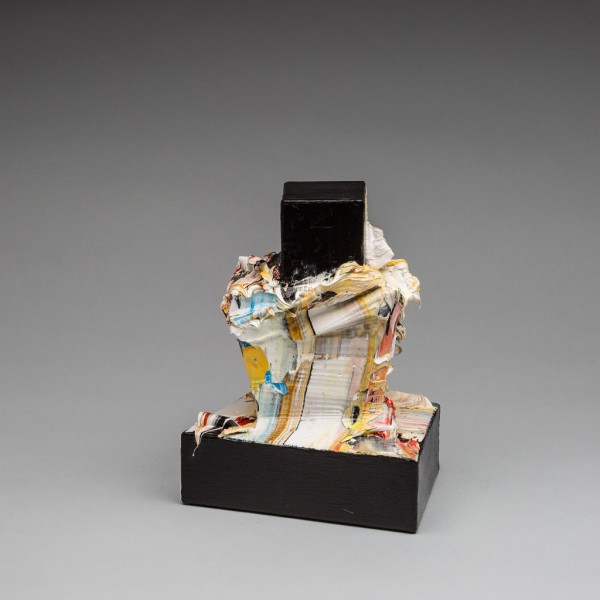
A fearless practitioner of unbridled abstraction with a career dating to the 1960s, Cornelia Shultz, now 79, continues to amaze by teasing paint into the most improbable contortions. The frothy surfaces of her sculptural paintings bring to mind volcanic landscapes and disparate geological epochs — randomly sampled and fluidly conjoined. The feel is of wild abandon. But the effect, fashioned from dense swatches of heavily worked oil paint, rests on the artist’s mastery of the textures and shapes that can be coaxed from it. It’s a kind of virtuosity that today is in short supply, devalued by those who think only ideas matter. Schulz’s retro modernist idea is that paint is a vital, life-affirming force, and that the deft manipulation of it can be a worthy end unto itself. She goes at it full-throttle.
Here, as with works from the past decade, Schulz paints on geometrically shaped canvases, bolted together in the manner of Frank Stella and Elizabeth Murray; only now the work has become more dimensional, with thick layers cascading down and around those irregularly canvases, held upright by pedestals. The paint has the texture of pulled taffy, and it runs in gullies, rivulets and curlicues, coalescing in folded slabs that have been smeared, raked, and thumb-quashed. The look is of buildings struck by an explosion in a candy factory.
The show is appropriately called Piece of Cake, and from it you might guess she’s poking fun at Wayne Thiebaud’s confectionary paintings, except that Schulz, a former colleague of Thiebaud’s at UC Davis, has never gone in for realism. She’s a fabulist. And, a something of a miniaturist, too: the largest of the nine works measure just nine inches tall.
Had these multi-part canvas sculptures appeared in the 1970s, they might have been hailed for challenging the hegemony of two-dimensional painting. Conversely, they could have been dismissed as too flamboyant, for violating Clement Greenberg’s call for painting to be flat. In today’s anything-goes environment such edicts seem quaint. In their absence we can more fully appreciate Shultz’s works for what they are: beautiful grotesques with apocalyptic overtones, fascinating for their near-comic excesses.
The only flaw in this otherwise stellar exhibition is the installation: the works are displayed on shelves designed for ceramic vessels. Raise an eyebrow and Patricia Sweetow, the gallerist, produces a plastic lazy Susan. She places it under one of Schulz’s pieces and spins it. The mechanical pirouette affords a 360-degree view of the object, something that can’t be had in the gallery in its present incarnation, as the shelves abut either wall or the black-out front window. The backstory: Sweetow, after 18 years on Geary St., moved last year to West Oakland after being pushed out of SF by stratospheric rents. Spun Smoke, her rebound venture, is a small high-end crafts store, which she plans to expand into a much larger fine art gallery in the same location.
Schultz could have waited for that day to arrive. But instead she volunteered to assist the transition by showing these site-specific works. The decision may have been a lark. Or not. In any case, it feels like a bold move down a path too few artists choose, one wholly in keeping with Schutz’s ongoing effort to expand the boundaries of painting.
–DAVID M. ROTH